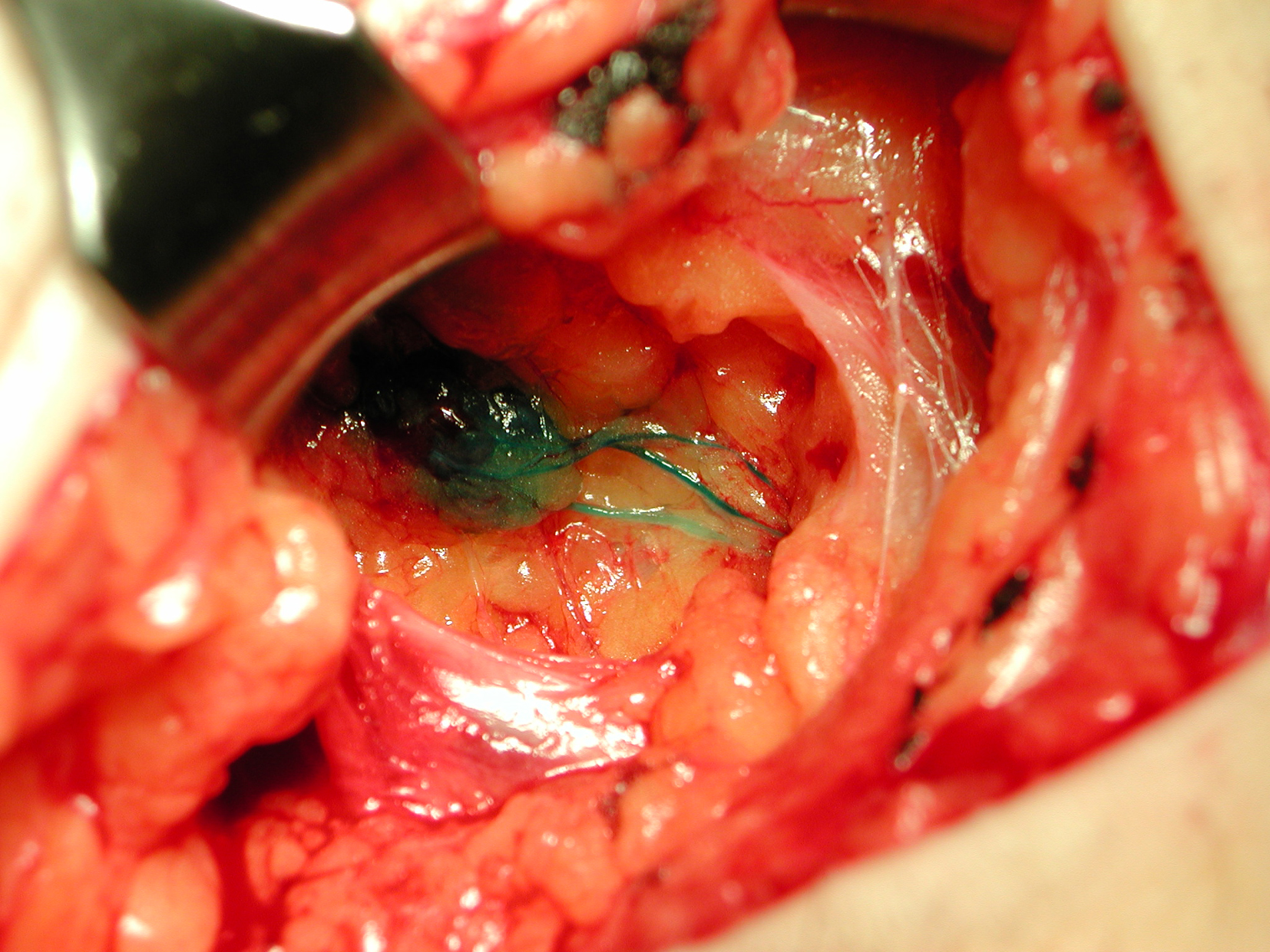Lymph Node Surgery
Lymph nodes are found throughout the body and are involved with the body’s immune system (defences against infections or cancers). The nodes act like a filter, the organisms that cause infections or cancer cells are caught as they pass through the lymph node. It is here that the body can identify the abnormality and activate a response to try and remove the infection or cancer, not only from the node but anywhere else in the body it is found.
The number of cancer cells, when they initially are caught in the node, will be too small to be seen on a scan, but could be detected by a procedure known as a Sentinel Node Biopsy. Alternatively if the cancer is able to grow there will come a point when it could be seen on a scan or detected by the patient or doctor as a lump (palpable). At this point the affected node is likely to need removing by an operation called a lymph node dissection.
It is important to remember that just because a node is palpable, does not mean to say it is a cancer. If you have a sore throat from a virus then the glands or nodes in your neck are often palpable and they settle as the infect settles. However if you have had a skin cancer (not including basal cell carcinoma) and you have a node which is close to where your skin cancer was and is palpable then you should see a doctor to have it assessed.
Sentinel Node Biopsy
Sentinel Node Biopsy (SNB) is an accurate procedure in determining whether your skin cancer has moved away from the skin to the lymph nodes. It is normally applicable for around 50% of patients who have had a diagnosis of melanoma depending upon certain features seen by the pathologist. If a melanoma has moved, it is most likely to go to one of the lymph nodes (glands) which is responsible for looking after the area of your body where your melanoma was. If you imagine lymph nodes are arranged like a bunch of grapes - a SNB identifies the region or regions where these bunch of lymph nodes are located and also pinpoints node within the bunch which is scanning the area where your melanoma was.
A SNB involves injection of two dyes. First of all a radioactive dye is injected at the site of where your melanoma was, the day before or the day of your surgery. This is carried out at either at the Leeds General Infirmary or St. James's Hospital, after which you make your way to the Spire Hospital for your operation. When you are a sleep a blue dye is injected again at the same site and the combination of blue dye and radioativity allows an accurate identification of the sentinel node. This process permits accurate identification (~96-99% accuracy) of the sentinel node for your cancer. At the same time as your wide local excision, this identified node is removed and sent for analysis. The risk of having a ‘bad’ node varies according to the initial pathology of your melanoma, but will be around 15-40%.
Mr Peach has performed nearly 1200 SNBs and is able to identify and remove nodes from the neck, axilla, groin and pelvis. He has presented at national and international meetings, has taught trainees and consultant colleagues and acted as an advisor to NICE on SNB for the latest UK national guidelines on managing melanoma. He chaired a national consensus meeting on SNB and then published the recommendations. The indications for a SNB do vary internationally, however Mr peach will, carefully explain what is involved and discuss the merits and demerits of proceeding with a SNB for your individual skin cancer.
Lymph Node Dissection
The lymph nodes that are most frequently involved with skin cancer are found in the axilla (armpit), groin or pelvis and sometimes the neck. When an abnormal lymph node is seen on a scan or felt as a lump, there is at least a 50% chance that other lymph nodes nearby will be involved too, but not visible or palpable. The recommendation when a ‘bad’ node is detected is to have that node and its associated nodes removed, an operation known as a lymph node dissection.
Mr Peach will discuss what the surgery entails to ensure that you are fully prepared and understand why it is recommended and what the impact may be. He has performed over 600 such dissections and has fine tuned the process to ensure the highest surgical standards.
Until recently the recommended standard of care was to offer patients who have had a ve sentinel node (bad node detected) a lymph node dissection. However the latest evidence from two large international trials has questioned whether this is required for all patients. Mr. Peach will discuss the options for individuals in whom a ‘bad’ sentinel node has been found.

Read what aspects of Service our patients have found helpful.
What aspects of the service provided by Mr Peach have you found helpful?
The fact that he listens and will investigate any concerns you might have.
location
Based in Leeds
Visit Mr Peach in one of the following locations











